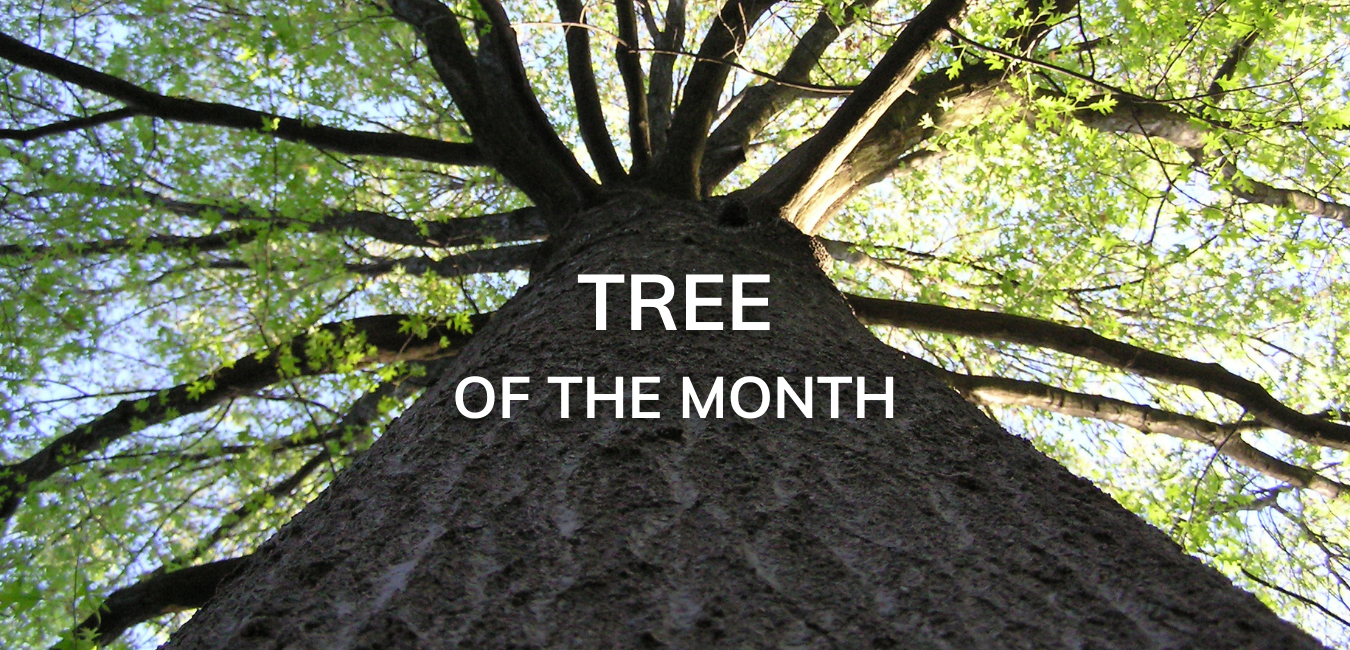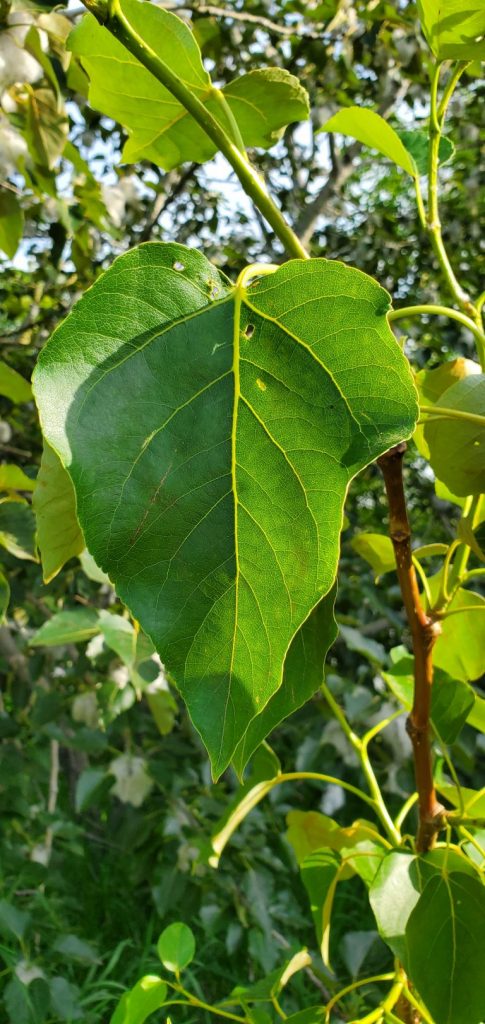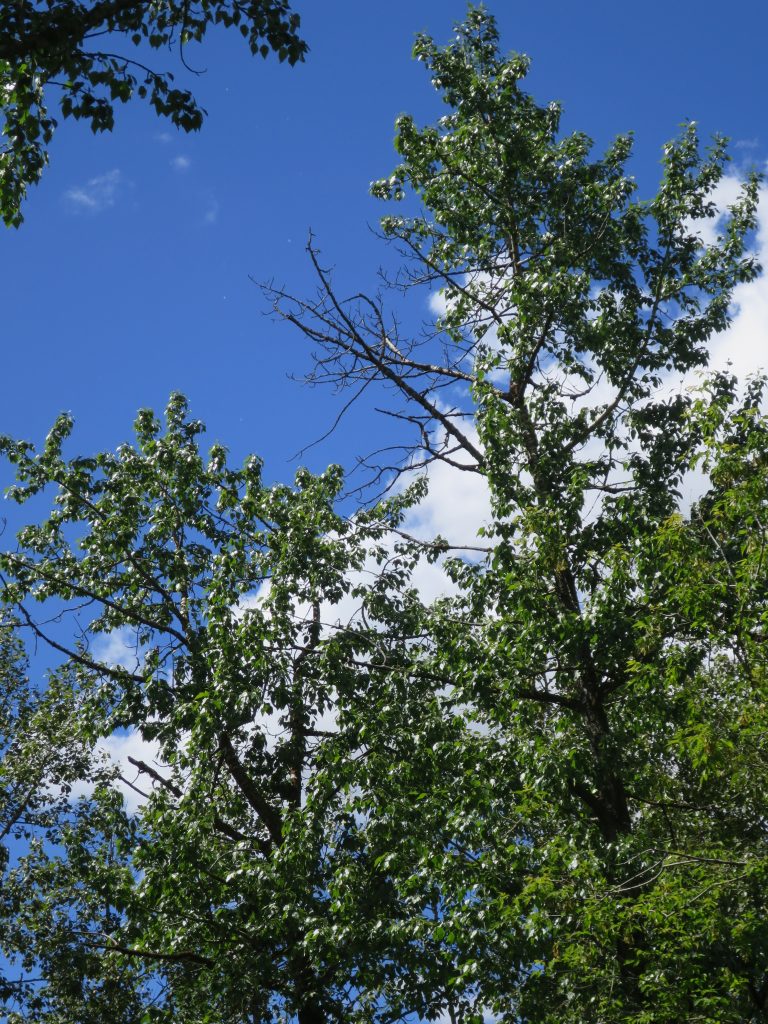Balsam poplar (Populus balsamifera) is notable for its pointed, shiny, oval-shaped leaves and resin-dotted undersides. This medium- to large-sized tree typically attains heights between 20-25 metres (yet as high as 30 metres in ideal circumstances), and lives on average about 70 years. Before leaves appear in the spring, male balsam poplars produce long catkins and female balsam poplars produce cotton-like seed bunches, similar to their cousin in the Willow family, the Cottonwood.
Balsam poplars are one of the first trees to wake with the arrival of spring – and you can smell them when they do! In fact, the fresh, resinous fragrance in the air from their buds is the source of both its latin and common name (Balsam, Balsamifera). The tree is also commonly referred to as a poplar, balm poplar, black poplar, tacamahac, and balm of Gilead.
The balsam poplar has a vast range, spanning coast to coast in Canada and growing everywhere in Ontario except on the northernmost fringe near Hudson Bay. And it has quite the reputation as one of the toughest and most adaptable deciduous hardwood trees in the country! Even after decimation by forest fires, these trees are prolific sprouters – sending up shoots from roots, stumps, and buried branchers. Balsam poplars can grow in a wide range of soil conditions, yet prefer more humid environments such as flood plains, river banks, and other lowland areas. However, they are fast growing trees that thrive in full sunlight.
Interested in planting a balsam poplar? Their shallow and extensive root system is extremely helpful in the prevention of soil erosion and the remediation of contaminated soils and water. Their size, along with their beauty and pleasant aroma, have made balsam poplars a popular choice for windbreaks – particularly in urban and suburban areas where their resistance to air pollution and road salt is a big added benefit!
Fun Fact: Bees sometimes harvest the resin from balsam poplar and use it disinfect their hives.
References
https://www.ontario.ca/page/balsam-poplar
http://www.hardyfruittrees.ca/catalog/forest-tree/balsam-poplar-populus-balsamifera-zone-1a
https://devostree.ca/native-tree-of-the-week-balsam-poplar/
Images Source
Agroforestry & Woodlot Extension Society. “Balsam poplar”




